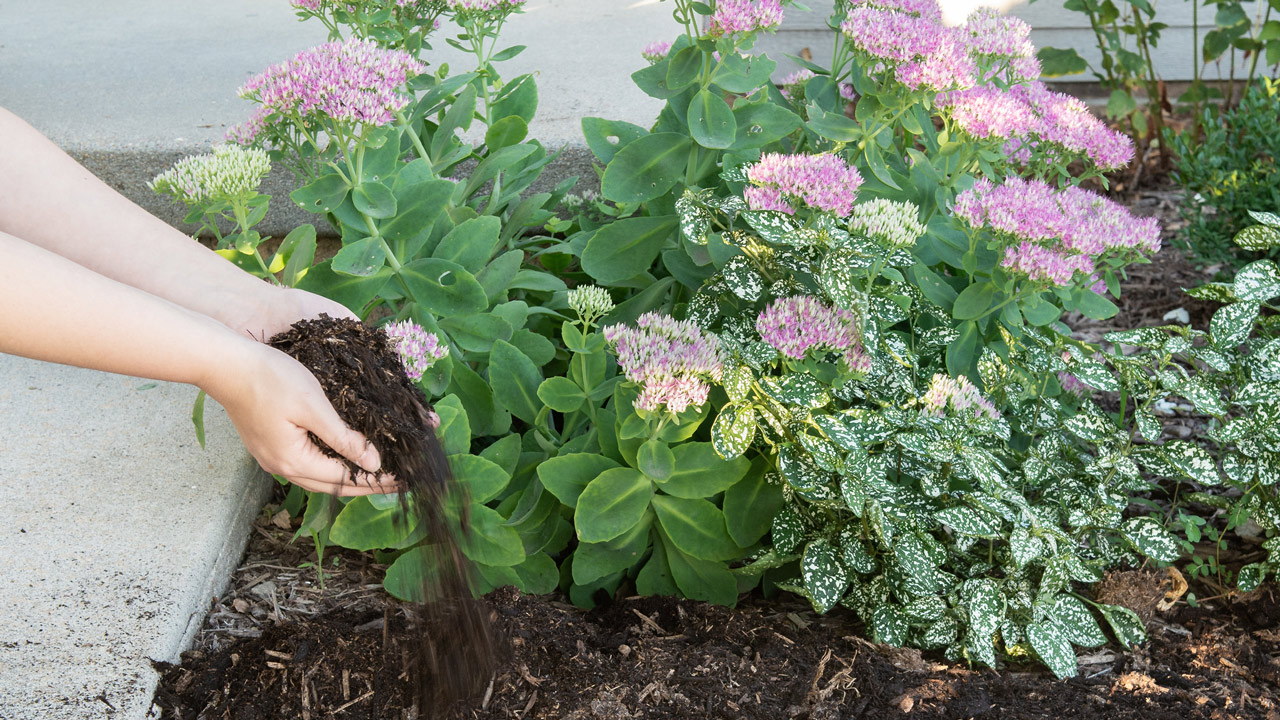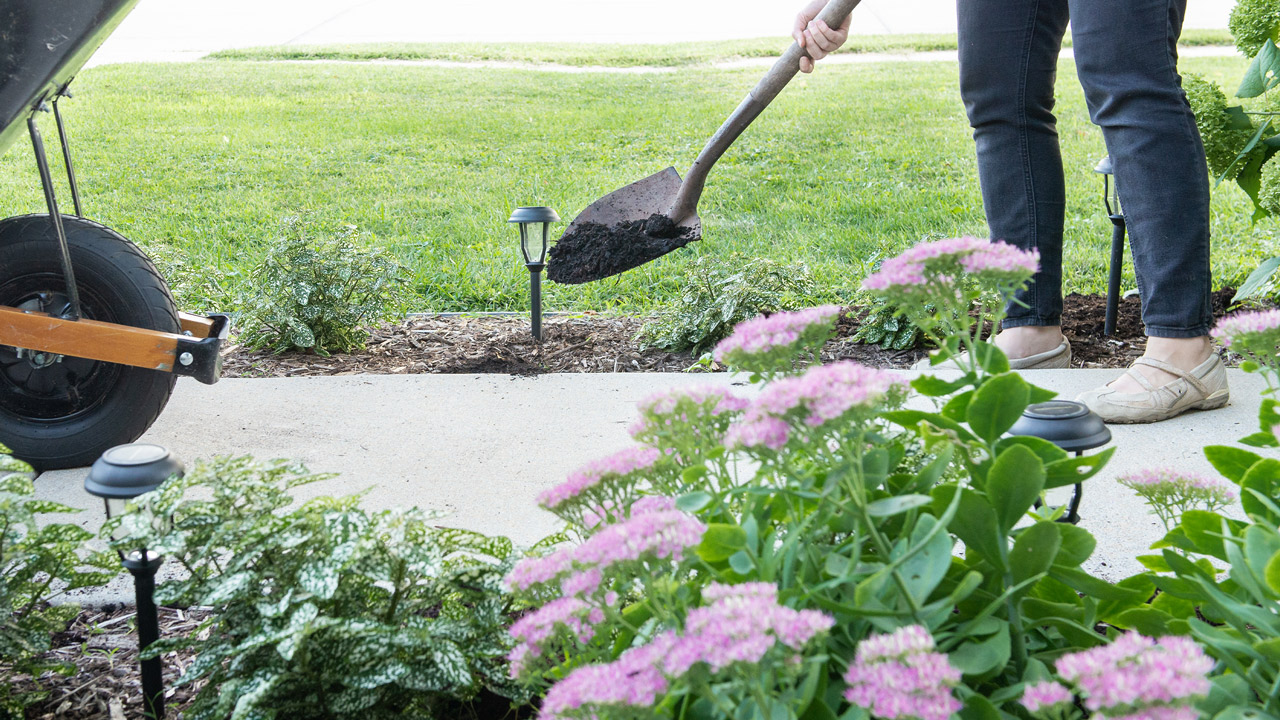
If your landscape is due for a fresh layer of mulch, the good news is fall is a great time of year to add new mulch and help your landscape get through the upcoming winter months. Mulch provides a powerful shield against the damage that winter can do to even our hardiest outdoor plants. Here we explore why new mulch should be at the top of that fall gardening to-do list. And we share a few easy tips for success too.
Mulch Insulates the Soil
Winters here in the Great Plains can be challenging – and not just those brutally cold days either. For our trees, shrubs, and perennials, it’s not so much how low the temperatures go. For them, the challenge is how variable the temperatures can be. Rapid shifts between freezing temperatures one day and warm sun the next can cause the soil to crack and heave – and this can expose tender roots to the elements. For shallowly rooted plants – newly planted ones too – this can be damaging if not fatal.
In the landscape, mulch acts as an insulating blanket. It keeps soil temperatures steady even when the weather isn’t. In the fall, mulch allows the soil to cool down more slowly – giving outdoor plants and newly-planted fall bulbs time to get ready for the winter. In the early spring, mulch works in the opposite way – letting the soil warm at a steady pace and maintain that warmth even if we get a late-season freeze.

Mulch Holds in Valuable Moisture
In the winter, dry weather and brisk winds cause plants to lose more moisture than they can take up. This is especially true of plants that retain their foliage through the winter. Conifers like juniper, pine, and spruce fall into this category as well as broadleaf evergreens like rhododendrons and azaleas. To guard against winter desiccation in the landscape, it’s a good idea to water well before the ground freezes in the fall – then lay down a layer of mulch on top to keep that valuable moisture around the roots instead of escaping into the air.
Tips for Success
If you decide to add mulch to your landscape this fall, we have a couple of tips to consider:
- Stick with organic mulches like wood chips, shredded leaves, and shredded bark. These are better for landscape plants because they allow air to reach the soil and interact with the plants’ roots. The texture of these mulches also creates small air pockets that increase their insulating power in cold weather.
- Add about three inches of mulch throughout the landscape. A thinner layer may not conserve moisture or moderate temperature as well. And a deeper layer may cut off air circulation with the soil and encourage voles to tunnel around looking for something to chew.
- Leave a couple inches of bare ground around the stems of trees and shrubs. This prevents excess moisture from damaging the bark and discourages voles from chewing on stems too.

Refresh Your Landscape This Fall
Mulching your landscape is one of the best things you can do to keep your outdoor plants healthy and comfortable through the cold winter months. So stop by the store and stock up on your favorite hardwood mulch this fall. And as always, if you have questions, let us know. We’re here to help.


